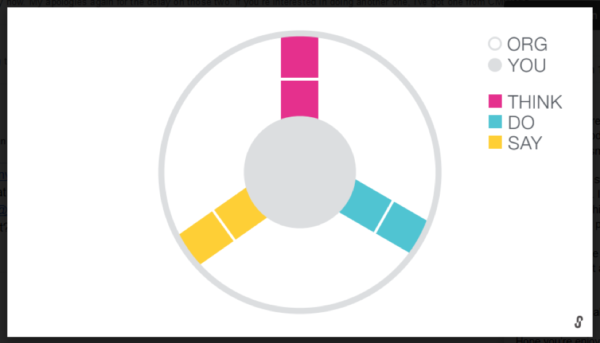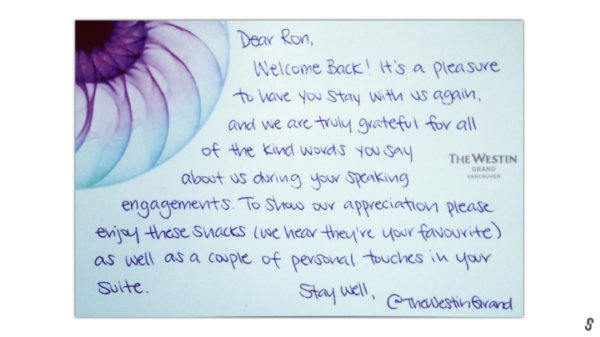
“Content marketing is becoming marketing.” That’s the first item John Hall cites in his Forbes article about 2019 content marketing trends to watch.
Once a radical idea (despite its historical roots), the concept of replacing one-sided information pushes with two-way conversations and relationships with audiences is now commonplace with marketing teams.
“Content is one of the best tools you have for earning trust, building your brand, generating site traffic and qualified leads, and everything in between,” writes John, co-founder and president of Calendar.
Content is one of best tools for earning trust, brand building, & generating traffic & leads. @johnhall Click To Tweet
Content marketing’s success prompted LinkedIn’s Jason Miller to say content marketers need to look toward what’s next. “We need to figure out what’s really fundamental to what we do, and what’s just a tactic or technique that’s worked brilliantly in the past but might not necessarily work in the future,” he writes. “We need to build our conversation around a shared understanding of those fundamentals, but not around the same endlessly repeated tactics.”
Church+State founder Ron Tite suggests content marketers need to go further – to elevate every conversation to something greater than tactics.
Doing that, he says, is the only way to win and keep the audience’s attention.
“People used to vote with their wallets, and now they vote with their time,” he says. “We’re battling for time against content providers. We’re competing against the internet, and quite frankly, it’s kicking our ass right now.”
People used to vote with their wallets. Now they vote with their time, says @RonTite. Click To Tweet
The key to winning this battle, he suggests, is to build a great brand by focusing on what your brand and the people behind it think, do, and say. (Unless otherwise noted, all quotes and images come from Ron’s Content Marketing World 2018 presentation, The Death of Content Marketing – The Rise of Content Marketers.)
Why think, do, and say must align
Too many marketers hear the think, do, say alignment advice and immediately advocate for one social issue or another. Unfortunately, audiences see right through this unthinking approach, often taking to social media to point out a company’s hypocrisy.
Brands also sometimes are pushed by their agencies to jump into whatever hot conversations audiences are having. But if the conversation isn’t aligned with the brand as a whole, this approach rarely resonates.
Ron offers a contrast between outdoor retailer REI and carmaker Audi. When REI launched its #OptOutside initiative, its CEO said, “We believe that a life lived outside is a life worth living.” It showed the brand believes in something greater than selling tents – that initiative is aligned with the brand’s purpose.
On the other hand, Audi aired an ad on gender equality in the workforce during the Super Bowl. While an admirable cause, Audi missed a step because gender equality is not connected to the reason Audi makes cars.
“If you believe in something greater than your product and you align the behaviors and actions that reinforce that, that is worth talking about,” says Ron. “When an organization, and all the people within the organization think, do, and say the same thing, now you’ve got complete organizational alignment. And this is a marketing plan we can talk about.”
To illustrate, Ron shows a simple diagram that shows what it looks like when the thoughts, actions, and communications of an organization and its leaders and representatives are all aligned with the brand’s.

The harmonious image is quickly disrupted when the center circle rotates – and an individual thinks, does, or says things that oppose what the rest of the organization thinks, does, or says – creating an integrity gap.
Integrity gap is created when brand reps think, do, or says things opposite of rest of organization. @RonTite Click To Tweet

These integrity gaps account for every brand failure (explosions, as Ron calls them) over the past decade.
“If, as an organization, all you do is think, then you’re a think tank,” he says. “If, as an organization, all you do is do, do, do, you’re a sweatshop. No one wants to work for you … If, as an organization, all you do is say, say, say, but you never actually deliver on what you promised, then your customer churn goes through the roof.”
It has to be think, do, and say in harmony.
Start with thinking
The first step toward a congruent, inside-out alignment is to stop and have a good, long think. Microsoft did this in 2014 when Satya Nadella took the reins and reversed a generations-old practice of denying and vilifying the competition.
Ron, who counts Microsoft as a client, remembers Satya’s predecessor, Steve Blamer’s era. “I could never go in with a Mac and present. You’d go in and they’d say, ‘Could you put a yellow sticky note over the logo?’”
During the same period, Microsoft employees consciously corrected non-Microsoft language, saying, “Don’t you mean you ‘Bing-ed’ it?” in response to someone using Google as the search-engine verb.
Satya thought differently about prioritizing Microsoft customers over its products. He realized Microsoft customers use a variety of software and hardware. He acted differently to change Microsoft’s culture. And he spoke differently by talking more about users and less about Microsoft.
Satya’s new way of thinking allowed Microsoft team members to reorient their thinking to put customers first. Without it, no behavioral or verbal strategy would have turned the stagnating ship around.
What brands do
In the past, marketers’ goals included the task of creating a customer. Today, though, marketers can elevate their thinking to affect what they (and the brand) naturally do and say. You’re not bound to the content marketing tactics of steadfast content marketing brands (think Red Bull, REI, and Nike). Instead, look at how they think and let that inform your brand’s strategy with its unique purposes and values.
Talk of change tends to motivate a few trailblazers on each team to go back and disrupt their hard-fought, well-oiled machine. To clarify, you can’t take what Ron says (or what you read on the CMI blog) and single-handedly innovate the proverbial automobile assembly line.

Most enterprise content marketing teams have spent time and resources honing clear roles, responsibilities, and performance measurements.
Even if your department is on board with the change, you should, in keeping with the assembly line analogy, dedicate one team to crafting a prototype that embodies your new philosophy. Much like a dedicated group creates a concept car.

To apply the method to marketing, Ron gives a real-life example: “I tweeted that I loved the Westin Grand,” he recalls. “They write back, boom, ‘We love you too. If there’s anything we can do to make your stay better, let us know.’”
He responded to let them know there was no shampoo in his room that morning. “A little later, there’s a knock at the door,” he says. “A woman comes in with fresh fruit. She has chocolate. She has ice water. She has this note.”

He was delighted, and, as he is a frequent speaker, many people in his audiences heard about his positive experience. Word got back to the hotel property, which decided to kick things up a notch. The next time he checked in to the same hotel, he found his favorite drink, snack, a framed picture of him with his furry best friend, 20 shampoo bottles, and this note:

Now, the Westin’s novel gesture feels natural. “They’ve done it before, and it feels just as special. They probably have a room full of the frames, and they’ve got a process,” Ron says. But the takeaway is that Westin’s personal outreach wasn’t always an “assembly line” act.
“(Content marketing revolutionaries) set out to make a change for their business through many incremental improvements that would add value to their customers’ lives,” writes CMI chief strategy advisor Robert Rose. “Only in hindsight do we see them as revolutionaries.”
Ron agrees. What you do today should not reflect another thing that weighs down your marketing task list but should represent a byproduct of your (and your corporate culture’s) rational transformation.
What brands say
How’s this for irony? All the way to the end, Enron, the U.S. energy-trading and utilities company that perpetuated one of the country’s biggest accounting frauds, displayed in its corporate lobby the words integrity, respect, communications, and excellence.
The travesty seems laughable today, but how much of your brand’s purpose statement is really lived out?
How much of your brand’s purpose is really lived out, asks @RonTite. Click To Tweet
“I shouldn’t read your values,” Ron says. “I should experience your values.”
Nike’s much discussed Colin Kaepernick campaign provides an example of what a brand says being supported by its actions. The copy literally speaks to elevating the conversation, Ron points out. And for a company that says it’s about supporting athletes, stepping into this controversy despite the risks backs up its words with actions.
Believe in something, even if it means sacrificing everything. #JustDoIt pic.twitter.com/SRWkMIDdaO
— Colin Kaepernick (@Kaepernick7) September 3, 2018
Aim higher than content, marketing, or advertising
Platforms and mediums will come and go. The content marketers who stand the test of time are those who build content brands around their values, not their products. And remember, if you only value your company and your products, that’s what you’ll talk about by default.
Adopt this think-do-say attitude, Ron says, and your advertisements and typical content assets can soon be interchangeable — not because they look alike or serve the same goals but because they spring from the same mindset, which drives everything your brand does and says.
Back to Nike’s Kaepernick tweet.
“Is this PR? Is this an ad? Is this content,” Ron asks. “It doesn’t matter. It’s marketing. Let’s own it and tear the labels away.”
When you elevate the conversation and let go of labels, you can choose any tactic to support your brand. It doesn’t matter what you call it.
“Once we believe something that’s greater, once we’ve elevated that conversation, once we’ve backed it up with actions that are based on who we’re doing it for, what they want us to do, and who we do it with, that is worth talking about,” Ron says. “That is worth marketing.”
HANDPICKED RELATED CONTENT:
Here’s an excerpt from Ron’s talk:
Ron Tite’s Content Marketing World presentation is part of this winter’s CMI University curriculum. Don’t miss out – enrollment opens today.
Cover image by Joseph Kalinowski/Content Marketing Institute